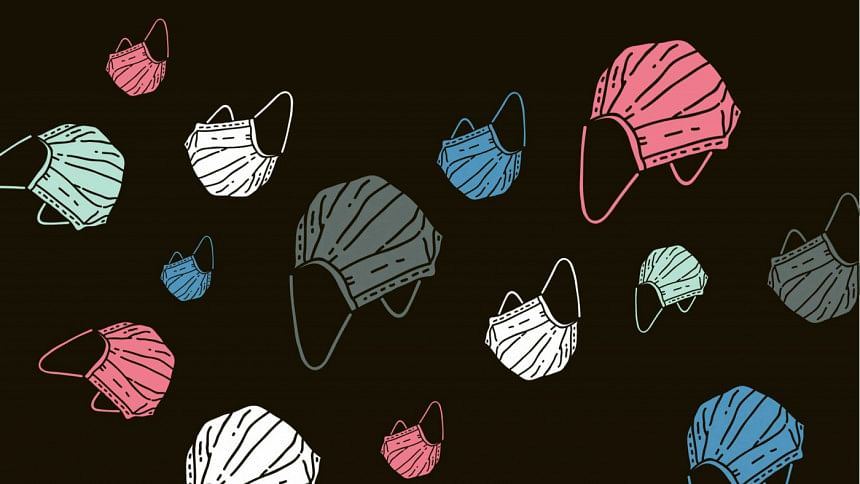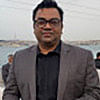When the masks come off

Will the Covid-19 masks finally come off in 2022? The ever-evolving nature of our little big enemy makes it difficult to say if the mask mandates will remain effective in this new year. The signs indicate the pandemic's weakening, and the end of the global misery is probably within sight. So, are services and masks going to remain entangled in the much-awaited neo-normal? While many will keep on wearing the masks voluntarily, many others will abandon the face-covering at the first opportunity. I belong to the second category; I cannot wait to liberate myself fully from the stringed piece of fabric.
Wearing masks can wear people out. They can stop people from displaying their emotional palette. With masks on, people can neither use their smiles as a social lubricant, nor express their discomfort, dismay or disdain in public. On the other hand, masks can be the perfect gear to hide emotions. They spare the wearer from the guilt of faking it. They give the perfect cover-up for their grins and grimaces, offering an emancipatory shelter for hiding their feelings. Then again, in the post-pandemic world, one wonders how liberation from masks will affect our everyday lives. What will happen to the physical and figurative disguises that we don on a daily basis?
The thought occurred to me while attending an academic presentation the other day. The nonsensical comments of some speakers made me make faces underneath my mask. The upper part of my face maintained a poker mode, while the lower part contorted like Jim Carrey in the animation-inspired movie "The Mask." I thanked the divine spirit for giving me the mask. The following day, I was in a meeting where everyone took off their face masks as we were safely spread out. Someone made a very absurd proposition, and an uncivilised grimace that I have cultured during these masked days made an appearance. It is only after I had made the ugly facial gesture that I realised I was not wearing my mask. Exposed and embarrassed, I thought of doing some research on the socio-behavioural changes that wearing masks has inflicted on us during this period of health emergency.
Masks have already brought changes in the communication package of frontline workers, who have to deal with their stakeholders in a physical setting. Unlike many of us who have worked from home using digital devices, doctors, police, or retailers don't have the luxury of switching off their Zoom video option or clicking a reaction to suggest emotion. These people, who interact at a human level, have realised that they must be extra expressive to compensate for the masked expressions. They have learnt to adapt to a world where facial expressions are invisible. With half of the face covered from the view of the viewer, a salesperson, for instance, has to widen their eyes to suggest warm greetings or raise their eyebrows or squint them to give additional visual clues. The non-verbal thank you that was once said with a smile could not be relayed anymore. The smiley or facial assurances that were once used to complement words are now faded into the folds of a surgical mask. How do we greet, coax or flirt with our masks on? Use hand gestures? Tilt heads? Such use of body language is fast becoming a part of the habit, because without these communication gizmos, my words can be interpreted wrongly.
The head of Emotions Lab at the University of Wisconsin–Madison has categorised three types of smiles: "those that express pleasure at a reward or surprise, like when you get to see your friends in person after a prolonged separation (soon, please); those that convey a desire to be friendly, or at least non-threatening, which she calls smiles of affiliation; and those that show dominance, like the one Dirty Harry gives when he asks a certain punk if he feels lucky." Paula Niedenthal argues that it is easy to confuse one category with the other. If the use of masks is stretched, people will have to explain the context to help their listeners understand or interpret a situation. She gives the example of handling a barking dog with facial gestures. The dog could have been controlled better with a friendly look rather than with a hand gesture. The issue can be even more troublesome in a cross-cultural setting. What if hand gestures that are deemed in one culture are rude in another? What about visual learners who need to see the movement of lips to process a message?
Meanwhile, in the masked sanctuary, a smiler can grin to recall some happy memories and his beaming face may be totally out of synch with his setting. So, after practising these non-verbal cues as well as relishing the secret smiles for about two years, have we internalised these habits? More importantly, the million-dollar question is: Will these old habits die hard? Or will they phase out?
They say, behind every mask, there is a face, and behind that a story. What stories are we losing when we are hiding our smiles behind our masks? I cannot hide a smile and expect the whole world to smile with me. The pandemic is giving clichés a bad rap.
The movement of zygomaticus muscles used to produce a smile has always been powerful. At times, these movements are far from authentic and, at best, fake. It is no different from a mask as sometimes a smile is also worn as a protective measure. It is a part of the disguise that we put on every day. We post happy photos on Facebook to protect ourselves from unsolicited probing into our lives. Such flimsy protections come with a shelf life. Eventually, we have to erase the fake smile or take off the mask of disguise. But there are people who are afraid to take off their figurative masks, which they continue to wear throughout their lives.
Their masked existence is no different from the double lives lived by superheroes. We have seen how Batman needs his masks to perform in life. Or how Superman brings his "inside out" to create a fallacy of his supernormal power. When he recourses to his inner strength, as symbolised by the outwardly worn undergarment, he finds the "creative" mask of a hero. Funnily enough, the dilemma of masks got twisted recently, when dressers were not sure whether to put on their Covid masks under or over their Halloween masks. While a Halloween mask is designed to liberate one from the social norms for a day, a Covid mask remains a marker of the emergency protocol. Their coexistence created a unique condition that made us revisit the double piston of liberation and protection.
We wear masks because we seek protection. Masks bind us in various restrictions as suggested by the overwhelming signs: No Mask, No Service. At the same time, we wear masks because we want freedom. It is the best way to be authentic. I can make faces without being worried about being seen by others. The German language actually has a word to describe the freedom found behind a mask: Maskenfreiheit. You do not have to be a masked celebrity in a crowd to enjoy your privacy; walking alone in a foreign land can give you the mask of freedom. The tour is your metaphorical mask—a source of your excitement. But is it healthy to seek such pleasure? The answer ripples through the facial muscles of all those who enjoy their masks.
Once the Covid-inflicted mask is removed, we need to learn to juggle between the face mask and the figurative mask. We need to put it on while rendering services like a salesperson programmed to chant, "The customer is always right." Such smiles, also known as PANAM smiles, named after the service smiles of flight attendants, are needed to be phoney for the sake of decency that civilisation has ingrained in us. However, we also need to learn to set such masks aside for people with whom we want to be honest for the sake of humanity that tradition has taught us. If we do not learn to negotiate with our masks, they might very well trap us in the prison-house of our hearts.
Dr Shamsad Mortuza is the pro-vice-chancellor of the University of Liberal Arts Bangladesh (ULAB).

 For all latest news, follow The Daily Star's Google News channel.
For all latest news, follow The Daily Star's Google News channel. 



Comments